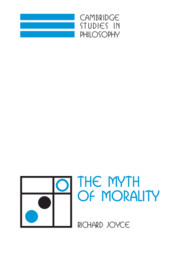3 - Practical instrumentalism
Published online by Cambridge University Press: 22 September 2009
Summary
OBJECTIVE REASONS, SUBJECTIVE REASONS, AND PRACTICAL RATIONALITY
I have argued that the truth of a moral judgment like “It was wrong for S to do that” depends on whether we can make sense of there being a reason for S not to do that. We are asking this question from a perspective external to morality, but in doing so we are not falling into Carnap's trap of employing the concepts of a discourse in the very act of questioning the adequacy of that discourse. Outside morality we know very well what reasons are: most conspicuously, we have a normative framework of giving and accepting reasons for acting known as “practical rationality.”
Common sense demands a distinction between reasons that an agent is aware of and those he is ignorant of. If Mary is thirsty, then it seems she has a reason to drink the liquid in the cup before her, which she believes (with justification) to be water. But if, in fact, the cup contains poison, then we also allow that there is a reason for her not to drink from the cup. Bernard Williams argues that there is only one reason here – for Mary to refrain from drinking – but that seems unnecessarily restrictive. Mackie prefers to say that “there is no need to choose” – in one sense Mary has a reason to drink, in another she has a reason not to drink – and this seems the more natural answer.
- Type
- Chapter
- Information
- The Myth of Morality , pp. 53 - 79Publisher: Cambridge University PressPrint publication year: 2001



